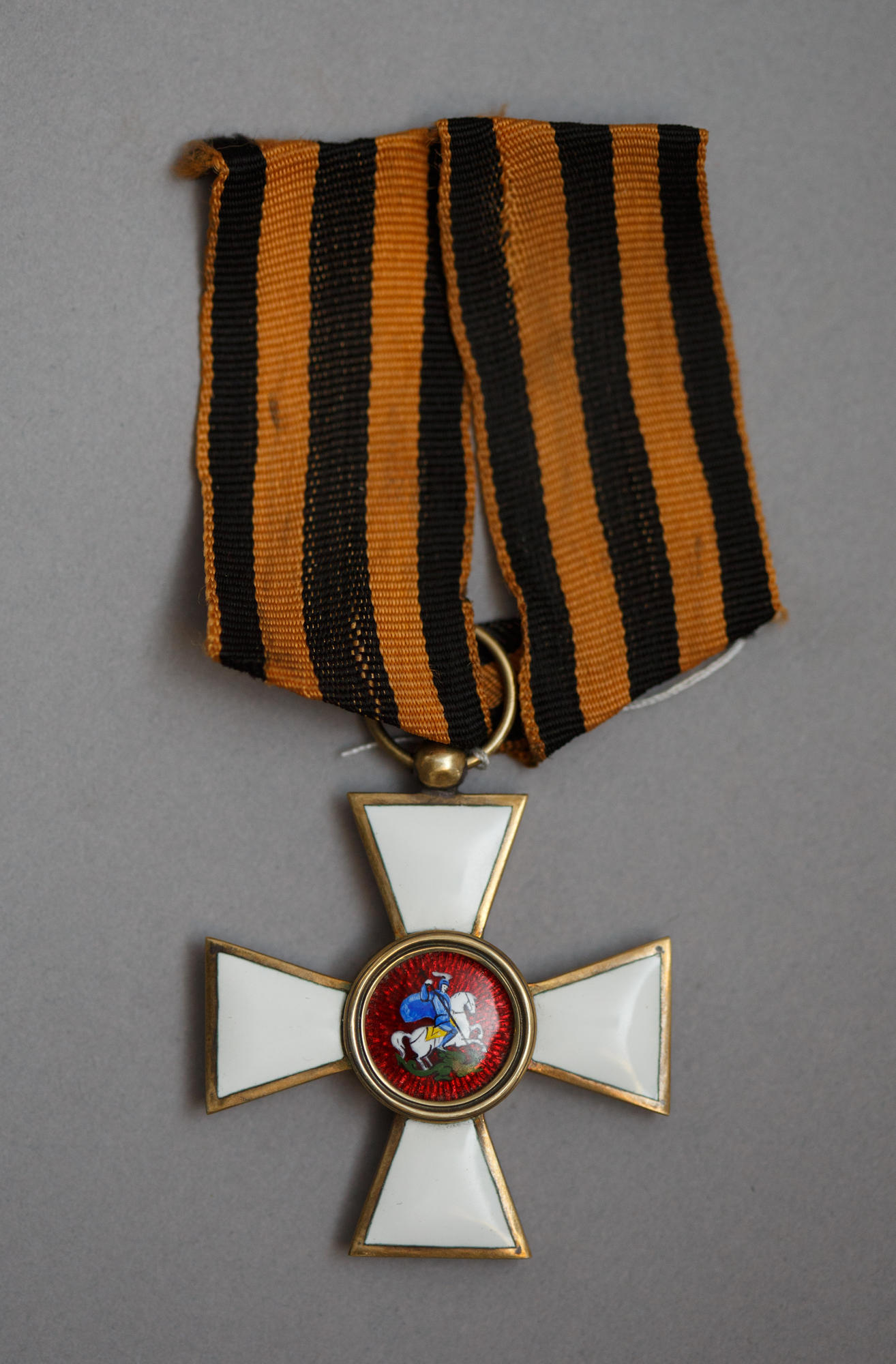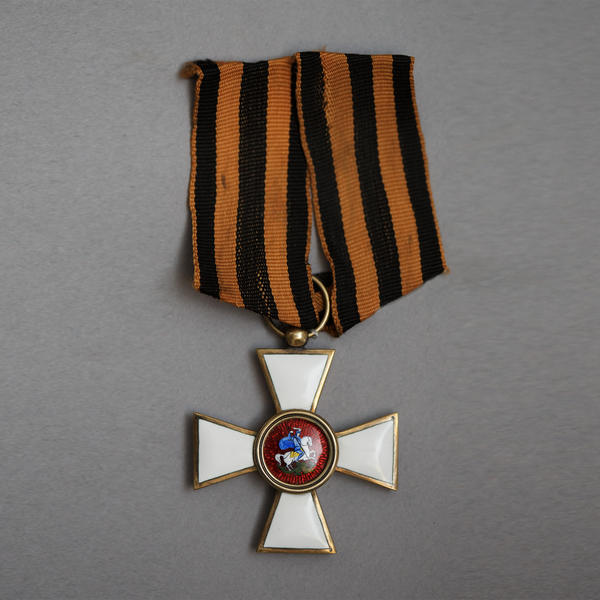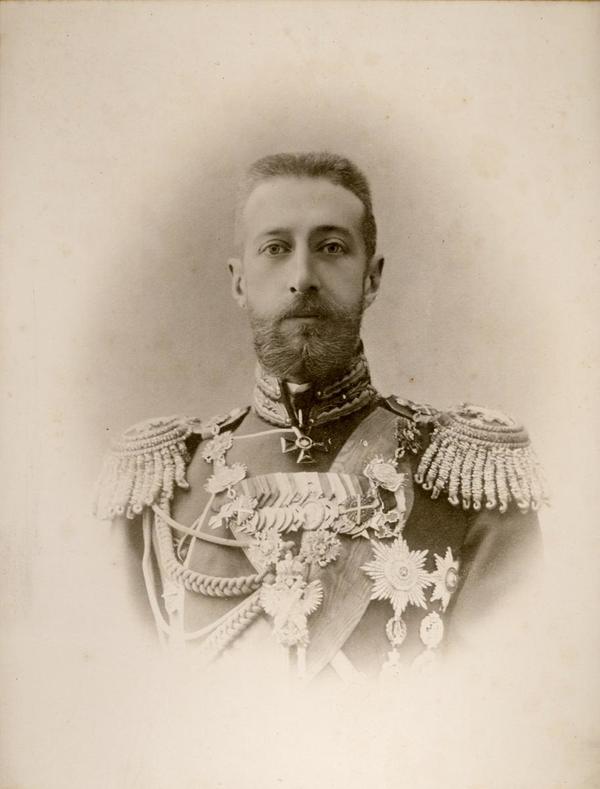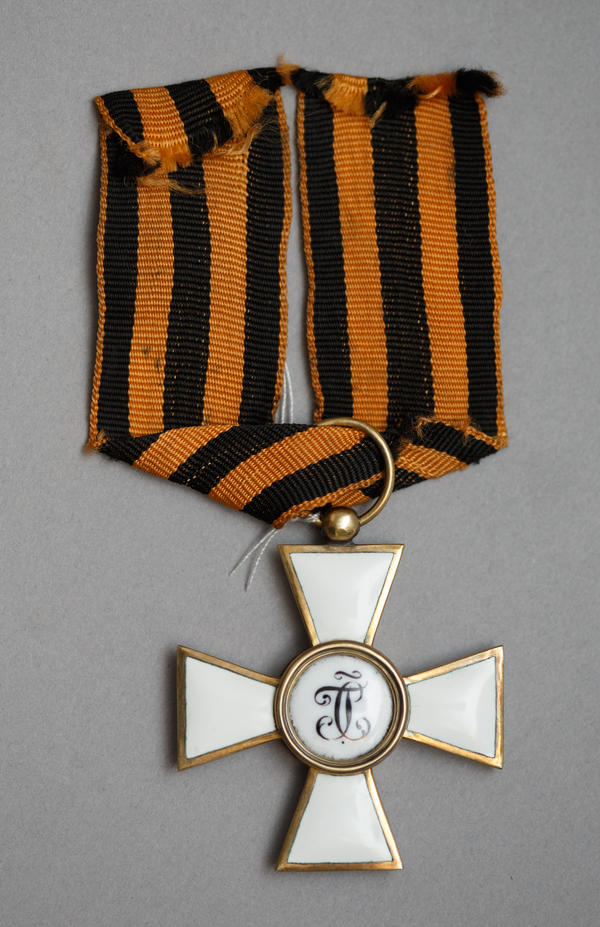Prince of the Imperial Blood Konstantine Konstantinovich Romanov was awarded the Order of St. George, 4th class, for saving the regimental colours in one of the many bloody battles of World War I. He received it from the hands of Emperor Nicholas II.
The Order of Saint George, 4th class
Creation period
1910s
Dimensions
3,4x3,4 cm
Technique
Gold, enamel
3
Open in app#1
The Order of Saint George, 4th class
#7
#8
In his letter to his father, Prince Konstantin Konstantinovich wrote:
‘Now that I have the cross bestowed by the Emperor, I will do my utmost to be worthy of his favour.’
#4
The Order of Saint George came in four classes. A knight of the Order, irrespective of the сlass, was promoted to the next rank. In 1915, Prince Konstantin Konstantinovich was promoted to junior captain.
Instituted in the second part of the 18th century by the Empress Catherine the Great, the Order was awarded to officers for their conspicuous bravery in action against the enemy. It came with a ribbon that had a pattern of black and orange stripes.
Instituted in the second part of the 18th century by the Empress Catherine the Great, the Order was awarded to officers for their conspicuous bravery in action against the enemy. It came with a ribbon that had a pattern of black and orange stripes.
Prince Konstantin Konstantinovich of Russia. Source: wikipedia.org
#9
The insignia of the Order consisted of a star and a badge. The star was diamond shaped, unlike most Russian and European insignia that usually were octagonal. The badge was a white enamel cross with the image of St. George the Victorious in the center. When awarded to non-Christians, the Christian Saint was replaced with the double-headed eagle from the coat of arms of the Russian Empire. The knight of the Order was entitled to an annual pension; when he died, his widow would receive the pension for another year.
The award was established in honour of Saint George, also called ‘the Victorious’, one of the most revered saints in the Christian tradition. He lived in the fourth century AD, during the Great Persecution of Christians; he refused to renounce his faith and was beheaded. By far the most famous legend associated with St. George is the story of how he slew a serpent-like dragon who terrorized a pagan town that sacrificed its young men and women to please the monster. Impressed by the miraculous rescue, the townspeople converted to Christianity. With time St. George’s feat became a symbol of victory over the Devil and evil.
#5
In 1917, the Order of Saint George was abolished. In 2000, it was revived as a Russian Federation award.
#6
The Order of Saint George, 4th class. France
#10
Sverdlovsk State Regional Ethnography Museum
read morehide
00:00
00:00
1x
The Order of Saint George, 4th class
Creation period
1910s
Dimensions
3,4x3,4 cm
Technique
Gold, enamel
3
Open in app
Share






